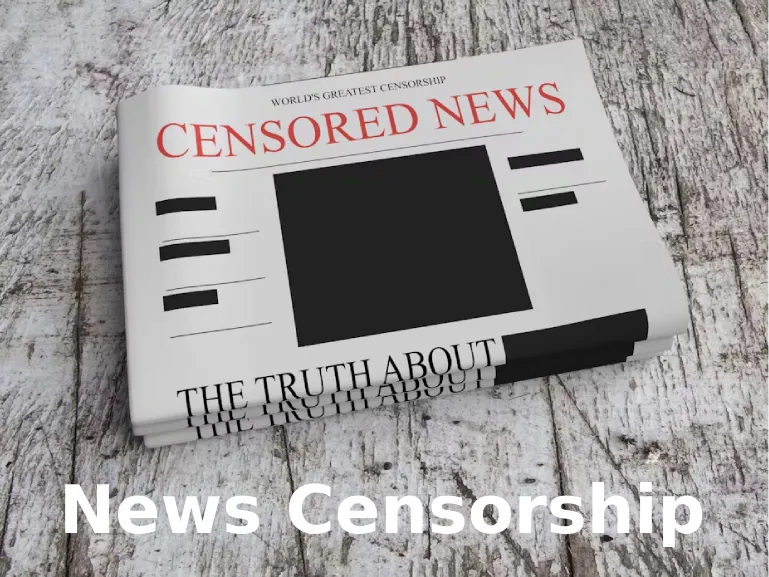Navigating News Censorship
In today’s digital age, the critical issue of news censorship has become a factor that influences how information is shared and perceived globally. governments and organizations increasingly control and restrict access to news content, navigating news censorship has become a significant challenge for journalists, readers, and policymakers alike. This complex landscape can obscure the truth, manipulate public opinion, and limit the scope of critical discussions that are essential for a well-informed society.
The rise of news censorship is not just a regional issue but a global phenomenon affecting both democratic and authoritarian countries. Understanding and addressing these challenges are crucial for ensuring the free flow of information. As we explore the intricacies of this issue, we will examine the impact of censorship on the media landscape and discuss strategies to navigate these restrictions while striving to uphold the principles of a free and open press.
Navigating News Censorship
Understanding News Censorship in Authoritarian States
. In these countries, the government uses various methods to manage news flow and shape public opinion. By understanding these methods, both the obvious and hidden ways these regimes silence dissent and maintain their power become clearer.
For example, high-profile cases of journalist imprisonment in China, Turkey, and Saudi Arabia highlight the extreme lengths to suppress independent journalism.
However, censorship in authoritarian states is not just about these direct actions. The media is also controlled through more subtle methods.. For instance, many major newspapers.
TV channels, and radio stations in authoritarian countries are either controlled by the state or heavily influenced by government officials. This setup allows these regimes to promote their own stories while issues that might harm their reputation are downplayed or ignored.
Additionally, the digital age has introduced new ways of censorship. The internet is closely monitored and controlled in many authoritarian countries.
Technologies like the Great Firewall in China block access to foreign websites and social media. Similarly, Iran’s “Halal Internet” and North Korea’s intranet restrict access to global information. These measures ensure that only state-approved content is available to the public.

Methods and Tactics of Censorship
Authoritarian regimes use a variety of methods to censor information and maintain control. Each of these plays a key role in silencing dissent and shaping public views.
Legal Mechanisms
Among the most common methods used for censorship in authoritarian states are legal tools. Governments often create vague laws to criminalize dissent and restrict press freedom. instance, laws against defamation, national security threats, and spreading “false information” provide a reason to prosecute journalists, bloggers, and activists.
In countries like Russia and Egypt, authorities frequently use these laws to arrest and imprison those who challenge the government’s views. Such legal tools not only silence critics but also make others afraid to speak out.
Technological Controls
Technological controls represent another crucial aspect of modern censorship. Authoritarian governments employ advanced technologies to monitor, filter, and block online content. For example, the Great Firewall of China uses deep packet inspection and keyword filtering to limit access to foreign websites and social media. Iran’s “Halal Internet” and North Korea’s intranet restrict global information and ensure that only state-approved content is available.Additionally, authorities use surveillance tools to monitor the online activities of journalists and critics.
Navigating News Censorship
Direct Intimidation and Violence
More obvious methods of censorship include direct intimidation and violence. Authoritarian regimes use threats, harassment, physical violence, and even assassination to silence journalists and activists.. The murder of Saudi journalist Jamal Kasogi is a stark example of these extreme measures.
Psychological Manipulation and Propaganda
Psychological manipulation and propaganda are subtler but still powerful forms of censorship. By controlling media channels and spreading state-approved messages, governments shape public perception and marginalize opposing voices. They use state-owned media to promote propaganda, discredit independent journalists, and create a positive image of the government. Additionally, they employ online trolls and bots to spread misinformation and attack critics on social media.
These methods create a strong censorship system intended to control information and suppress dissent. However, journalists, activists, and ordinary people often discover creative ways to bypass these controls. For instance, they use encrypted messaging apps, virtual private networks (VPNs), and international media networks to resist and undermine authoritarian censorship..
FAQ
Q1: What is press freedom?
Press freedom refers to the right of journalists and media organizations to report news and express opinions without government interference, censorship, or intimidation. A fundamental aspect of democratic societies
Q2: How do authoritarian regimes typically censor the media?
Authoritarian regimes often use a combination of legal restrictions, technological controls, direct intimidation, and psychological manipulation to censor the media. This includes enacting restrictive laws, blocking access to websites, surveilling communications, and using state-controlled media to propagate government-approved messages.
Q3: What role do international organizations play in supporting press freedom?
International organizations such as Reporters Without Borders (RSF) and the Committee to Protect Journalists (CPJ) monitor violations of press freedom, advocate for journalists, provide emergency assistance, and raise global awareness about repression. They work to hold governments accountable and support the protection of media workers.
Q4: How can journalists circumvent censorship in authoritarian regimes?
Journalists can circumvent censorship by using encryption tools to secure communication, leveraging decentralized platforms for publishing, collaborating with international media organizations, employing creative methods to hide sensitive information, and building networks of trusted sources.
Q5: What impact does censorship have on journalism and free speech?
Censorship undermines independent journalism by suppressing critical voices, distorting public perception through propaganda, and creating a climate of fear that stifles open debate. It erodes trust in the media and hampers the development of a well-informed citizenry.
Conclusion
Navigating the landscape of news and media in authoritarian regimes presents significant challenges for journalists and advocates of press freedom. The impact of censorship is profound, affecting not only the integrity of journalism but also the broader societal fabric by stifling dissent and controlling the flow of information.
Technological advancements play a crucial role in navigating news censorship, providing journalists with tools to secure their communications, publish independently, and protect their identities. Encryption, decentralized platforms, and anonymous browsing technologies are essential in the fight against repression.
Moreover, international support, whether through advocacy, financial aid, or diplomatic pressure, helps to sustain independent journalism and promote free speech.



